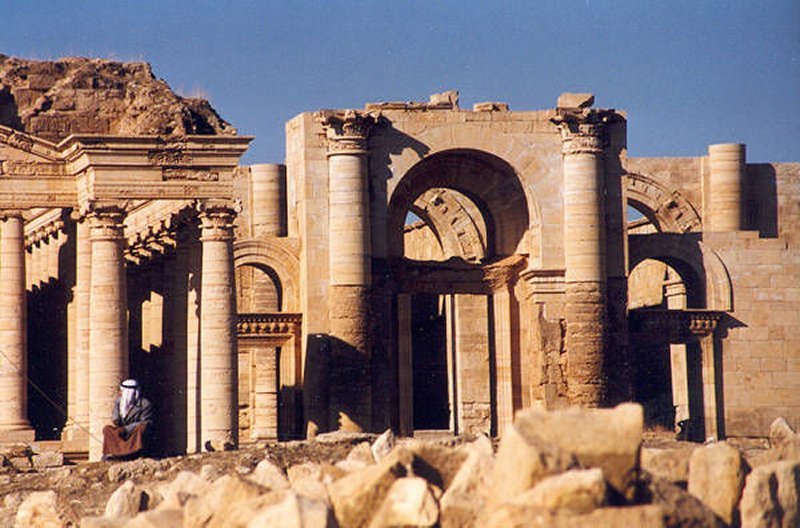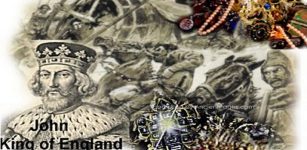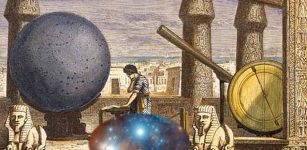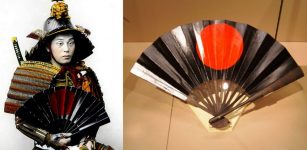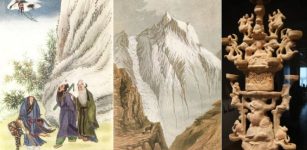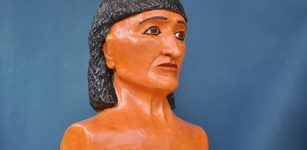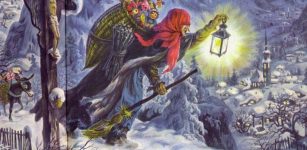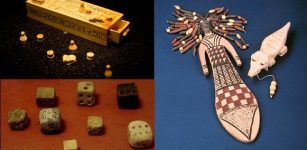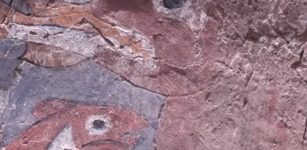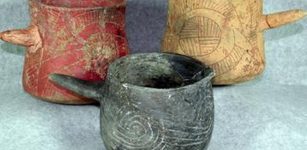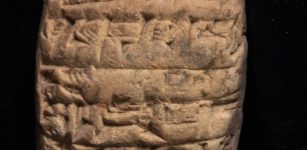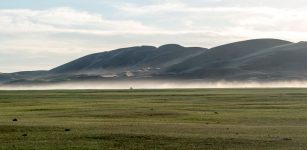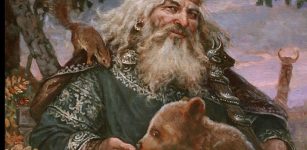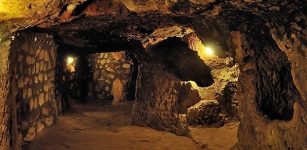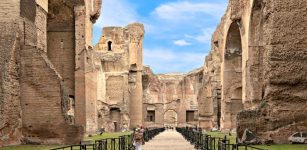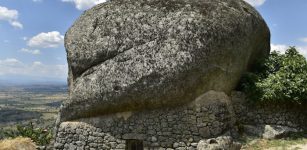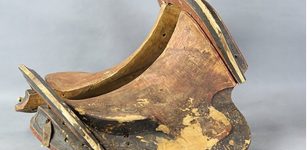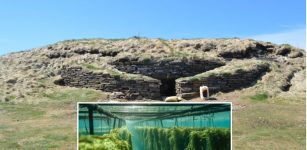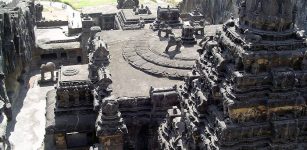Hybrid Camels Revealed In Ancient Arab Temple Art At Hatra, Northern Iraq
Conny Waters - AncientPages.com - Archaeologists found evidence of ancient hybrid camels during the restoration of the so-called Temple of Allat at Hatra (second century AD). The temple "City of the Sun" (139 BC - 226 AD), located in the city of Hatra, northern Iraq was earlier damaged by ISIS.
In a sculpted frieze on a lintel of the two rows of sitting camels converge towards a possible royal portrait. The two lead animals were previously interpreted as Bactrian camels. Now, the researchers reconsider this interpretation.
Artwork on a temple in northern Iraq depicts hybrid camels (two-humped camels) flanking a royal figure. This royal portrait decorates the center of the lintel. Image courtesy: Aliph-ISMEO project at Hatra, via Antiquity
Once a flourishing metropolis, Hatra served as the capital of the Kingdom of Hatra. The remains of the ancient city were destroyed by religious extremists between 2015 and 2017. Before that, the temple had also suffered decades of neglect.
During the restoration of the temple, the researchers observed something unexpected in a frieze above a door of the Temple of Allat.
"The horizontal stone piece of artwork appeared to show hybrid camels that resulted from crossing two different breeds. The depiction of these camels has helped researchers gain a better understanding of ancient Hatra, which was a small neighboring kingdom of the Roman and Parthian empires -- though those neighbors were often more hostile than friendly," reports CNN.
The artwork contributes to the growing evidence that the researchers have of when and where camel hybrids were bred. Earlier, it was believed that different types of camels were crossbred mainly in expansive empires. However, now, these latest findings show that this practice was much more widespread.
Decoration of the inner door of the southern iwan, with detail of the lintel (photograph courtesy of the Aliph-ISMEO project at Hatra). Image courtesy: Aliph-ISMEO project at Hatra, via Antiquity
According to Massimo Vidale, an associate professor at the Università degli Studi di Padova in Italy, "the image appears to express a precise message -- the direct involvement of the king in camel herding, management, and hybridization practices.
Breeding hybrids of a sacred animal
The artwork was added to the temple during a renovation conducted by King Sanatruq I and his son, Abdsamiya in 168 AD, the researchers believe. It was during this time that the royals rededicated the temple to the goddess Allat, in addition to erecting nearly life-size statues of themselves.
Previous research on the stone frieze suggested that it depicted eight dromedaries, with two Bactrian camels in the middle. Dromedaries are Arabian camels that are swift animals, represent ideal animals for riding or even racing. Bactrian camels, on the other hand, are native to Central Asia and have (with two humps). They are known to be strong animals that can withstand cold temperatures, high altitudes, and even drought.
Temple ruins at Hattra, Iraq circa 1988. Image credit: Victrav - source
Further researchers noticed that the faces and fur of the two so-called Bactrian camels actually looked more like a cross between a Bactrian camel and dromedary. And rather than a sizable space between the two humps, there was just a slight indentation -- a trait that has been observed in hybrids of these camel breeds.
Breeding camels have been conducted since the first century AD, according to the oldest hybrid camel animal skeletons recovered from the Roman and Parthian empires. This husbandry practice went into effect thousands of years ago because it leads to stronger and more resilient animals. Hybrid camels could carry double the load of dromedaries and more than double what a Bactrian camel could support.
Despite its diminutive size when compared with the surrounding empires, the kingdom of Hatra was still able to import distant Bactrian camels from the steppes of Central Asia and breed camels as a show of power.
Political power flex
Camels were likely considered to be a sacred animal to Allat, and other sculptures and friezes within the temple show the goddess riding the animal's sidesaddle.
General view of the Temple of Allat, Hatra. Image courtesy of the Aliph-ISMEO project at Hatra. source
The elaborate temple would have been seen by both religious visitors and the members of trade caravans. It might have even hosted markets, according to the researchers.
"The construction of the Temple of Allat seems to be a bold move by King Sanatruq I, importing Allat -- one of the most important pre-Islamic Arab deities," Vidale said, adding that "by appealing to Arab groups, the king made a serious step in the process of detaching Hatra from the shadow of the Parthian empire," Vidale said.
Creating and owning the best camels was also a political move because it created a direct association between the king and a sacred animal -- and distinguished the kingdom from relying on its powerful neighbors.
The king might have even had a monopoly on the breeding of these special camels, as well as an interest "in the management of the long-distance caravans of an ancient Silk Road that could expand the trade interests that made Hatra so rich," the researchers wrote in the study.
"The camels of the king, after all, are always the best," as the researchers summarize in their study.
Read more in the paper published in the journal Antiquity.
Written by Conny Waters - AncientPages.com Staff Writer



